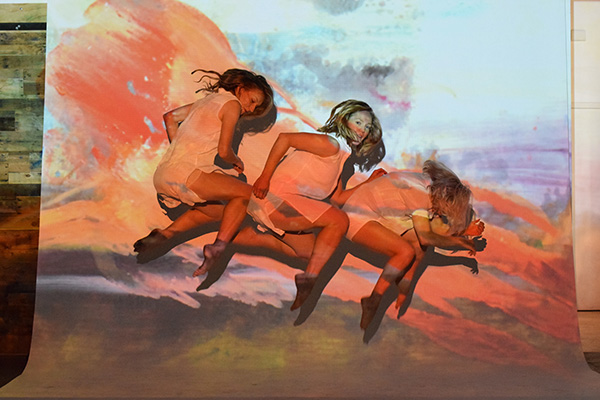Researching Every Step Along the Way
An Interview with Becca Fullmer
BY EMMALY WIEDERHOLT
Becca Fullmer is a member of Salt Contemporary Dance, a new contemporary dance company based in Salt Lake City, UT. She is also the director of its second company, Salt 2. Becca likens the work of contemporary dance to that of research, finding endless ways to research her body through movement. This interview is part of a series on contemporary dance.
~~
How would you define contemporary dance to someone without a background in dance?
Being a contemporary dancer, you would think this is the easiest question, but I have to re-think about my answer every time. To me, contemporary dance embodies every type of dance I can think of. Salt Contemporary dancers are classically trained, but also come from many different backgrounds and have many different facets to their technique.
Perhaps this wouldn’t be understood by someone without a background in dance, but when I think of contemporary dance, I automatically think of research. I can tell when I’m moving in a stale way; I’m not thinking and I’m not in it as much as I could be. But when I really focus on noticing how I’m moving or how something feels or relating it to my body in a new way or going further than I thought I could… it’s about being present. I never want to be moving without thinking. I’ve been practicing meditation this past year, and it’s helped me with how I research dance. I’m able to be more present and notice what’s going on within my body.
How would you recommend a student train for a contemporary dance career?
Travel and exposure is hugely important.
I also recommend learning to improvise. Whenever we have choreographers come work with Salt, it’s inevitably a collaboration between the dancers and the choreographer. The choreographers give us improvisation assignments and build the material from there, so having the ability to make up movement is important.
I also think it’s important to be technical, though it doesn’t necessarily have to be in ballet or modern. For instance, I wish I’d spent more time studying hip hop, as I have a difficult time moving really fast.
Generally, I don’t think there’s any form of dance that would be useless to study in terms of pursuing contemporary dance.
Does contemporary dance refer specifically to new dance being made, or is it a subgenre, like modern or post-modern dance?
Anything new could be considered contemporary dance. I don’t think right now is the only time dance has been made that’s been considered “contemporary.” Different styles branch off what’s been done before, and I think most dance artists are trying not to be stagnant.
There seem to be no rules in contemporary dance. Maybe I’m misinformed, but I haven’t heard of any. For me, it always boils down to research, within any movement.
Photo by Ismael Arrieta Photography
Are there successful funding models for contemporary dance?
Salt Contemporary Dance is a new company, so we’re experimenting with funding models, though I’m sure all dance companies are always experimenting with funding on some level. Sometimes we feel so frustrated and clueless as to how to make it work. For instance, the Art Council in Salt Lake City gives money to the current companies – Ballet West, Ririe-Woodbury Dance Company and Repertory Dance Theatre – but they don’t have any funds in their budget to offer new companies or artists. I don’t know how the dance scene can grow if there’s no room financially for new dance companies. We’ve been required to find other ways, like workshops and our annual choreographer’s festival. These are ways we’re trying to include new people in our mission and grow support.
What do you perceive is Salt Contemporary Dance’s contribution is to the contemporary dance arena?
I love that we only perform original works created on us. We never bring in a choreographer to set a piece that was created elsewhere. We’re always part of the process, which usually means we have created it ourselves in a way, because choreographers often give us improvisation tasks in that we create the movement and they organize it. We’re always involved in research from the beginning. It’s a way for us to contribute, because we’re giving our own movement and thoughts.
What do you see as the future of contemporary dance?
Maybe it’s not new, but something that keeps coming up is theatricality in performance. Up until recently, all of my performance experience was movement-based. It makes me uncomfortable to be theatrical onstage. I don’t consider myself an actress even though I know that’s silly because I consider myself a performing artist. For instance, in Brendan Duggan’s piece, I was required to speak onstage. Portraying someone I’m not naturally was difficult. It’s not new in dance, but it’s new to me.
Is anything ever really new though? I think we circle back. Which is fine, because for me, the most important thing is the research. It’s about the exploration within a piece or specific movement, whether it’s truly new or not.
Photo by Ismael Arrieta Photography
~~



